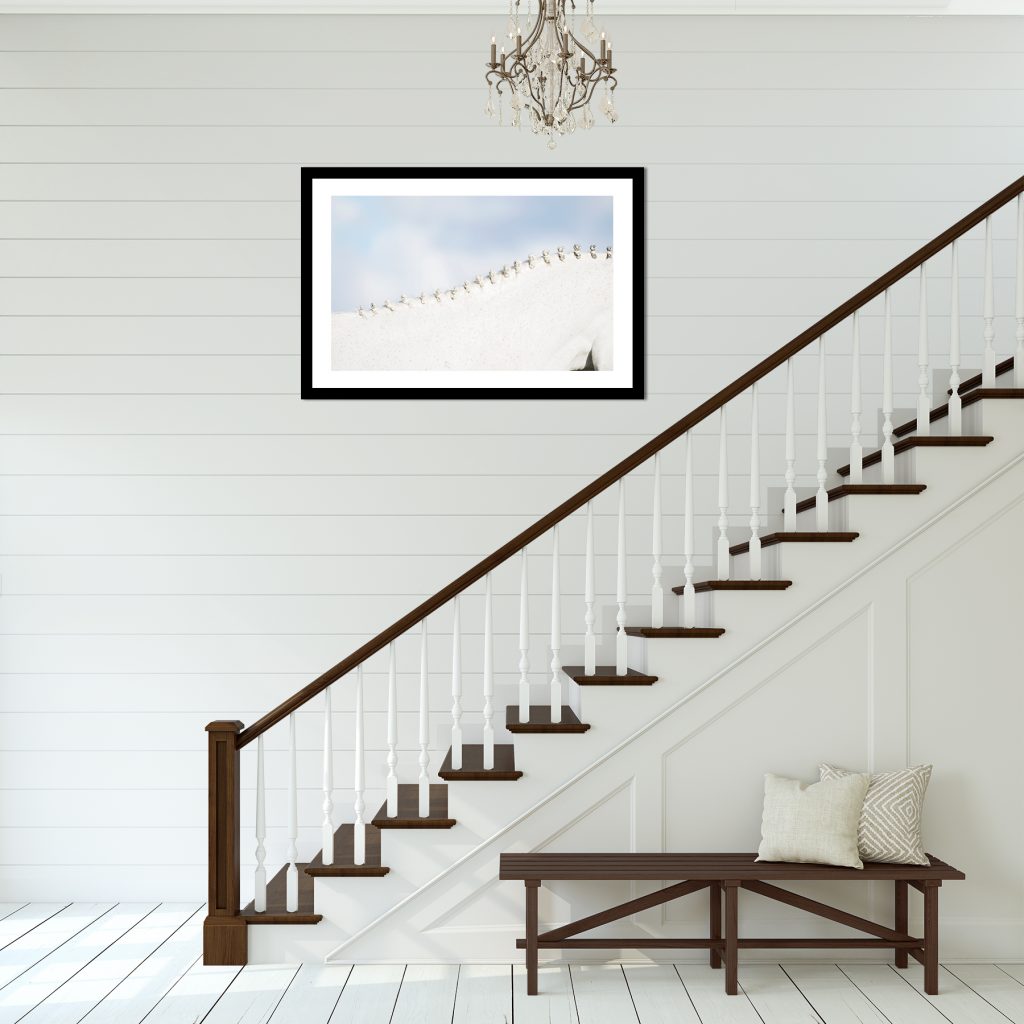Why frame a picture?

These days many pictures remain in digital form forever. This has certain disadvantages, as you may not quite remember where it lives as your collection gets bigger. Maybe it was on that old phone…..
So you might consider printing it, which is a whole subject on its own, but assuming you have a beautiful archival quality print that’s not going to fade or change colour what’s next?
Why should you have a print framed? Well, first of all it keeps the print clean if there’s glass or acrylic in the frame, and a mount or other device is really important to keep the print off the glass, and to make the print stand out and look special.
How do you chose a frame? Mostly it’s a matter of taste, and there’s an immense variety of ‘mouldings’ – the frame edge – which is usually wood, though cheap ones may be plastic. And of course there’s always ready made ones, some of which are quite good quality.
But for a beautiful Limited Edition print a bespoke frame is always preferable. I offer prints both framed and unframed, and my frames are usually black wood, which is nice and neutral, and a reasonably wide white mat sets off the print well.

For me it’s a matter of consistency, quality and brand image, but for individuals of course there’s a lot more choice involved. You may want to have the same frame moulding as you already have in the house or office for existing images, and usually a similar or identical frame looks best in any given space.
Here’s an example of not doing that, for reasons of history as the prints have been acquired at different times and from different places. You can decide whether it works or not.

This mismatched set also shows the problem of reflections

Then there’s the question of the choice of colour for your mat. Sometimes picking up a colour from the image works well, and again it’s a matter of taste – and fashion. (On which matter do you remember/if you’re old enough – the 1960s with all that orange and avocado! Hm!)

What about the glass though? There’s ordinary glass, non-reflective glass and super-duper glass which you can’t even tell is there. Of course the cost rises with the sophistication of the technology.
Reflections can certainly be problematic if you hang the print near or opposite a window, (see above) and artificial light can add to that, so this needs to be considered. As with most things you get what you pay for. There are of course other practical considerations. Do you for example want a huge print that doesn’t look dwarfed by your brand new dining table? Do you need to have your beautiful ‘elephants breath painted wall’ showing through the framing?
If your print is enormous practical matters will drive how it can be framed. Most framers have a maximum size that they will consider for traditional framing with mat and glass. Newer ideas include ‘floating frames’ that are increasingly popular and require no mat at all. These are particularly suitable for metal prints, which have a modern sophisticated look and are very different from the more traditional style of framing for Limited edition prints.
Acrylic images can be left unframed or encased in a floating frame or art box according to taste.

Some acrylics are supplied with a ready installed hanging system, (as the one above is) and some are intended to stand on a shelf, which means they can be quite wide, whereas the wall hung variety can be thin and elegant – or more chunky, giving a 3D effect – the downside of this is the extra weight if the acrylic is thicker. This might matter depending on the robustness of the wall on which you are planning to hang the image.
There’s no doubt though that some kind of framing is helpful in protecting your image if it’s just a paper print at the moment.
I would strongly suggest that you shop around, have a think about your desired location for the image, what style is going to suit that room, or the house generally, what colour scheme do you have, are you a modern or more traditional type yourself? High quality framing is undoubtedly pricey, but it’s an investment in the image you have chosen, and for sure cheap and poor quality framing will not enhance the way your image looks.
If in doubt about the quality of framing go to the Fine Art Trade Guild to see who’s recommended there.
So finally Good luck in the decisions you make to save and display your beautiful print, and if you have questions don’t hesitate to get in touch.
